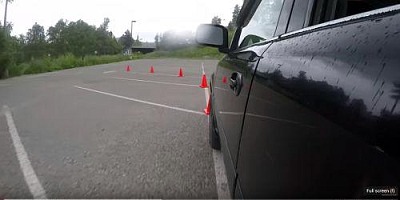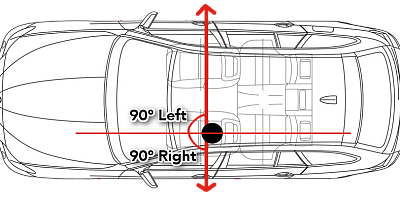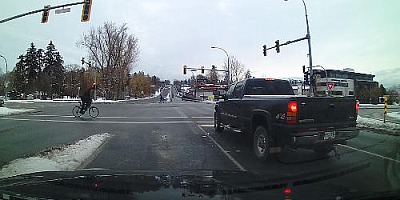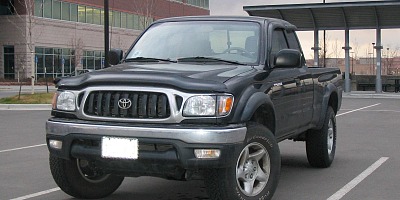Why Don't We Teach Driving's Basics?
Introduction
- Driving basics.
It's not something we ever talk about in driving.
It's not something we teach or offer new drivers who are learning to drive.
It's not something we offer as a refresher course for drivers that have been driving for a number of years and their skills may have deteriorated and they need a refresher course.
We Don't Have "The Basics of Driving"
But in every other skill that we do or teach has basics skills.
As some of you may or may not know, I take jiu jitsu.
Every Monday, I go to a fundamentals class in jiu jitsu.
If you learn how to write or you want to write a book, there's fundamentals of writing that you need to practice all the time.
Only with these basics in place can you build on and develop advanced skills.
It's like a house: you can't build the remainder of the house without the foundation firmly in place.
Like the house, driving's basic skills needs to be firmly in place before you can build advanced driving skills and become a safer smarter driver.
What are the Fundamentals of Driving?
When you start learning how to drive, get into a parking lot, work with pylons and figure out where your vehicle is in space and place.
 Working with new drivers in a parking lot is one of the basic skills that's required to drive.In other words, where your car is in relation to other vehicles and other road users on the roadway.
Working with new drivers in a parking lot is one of the basic skills that's required to drive.In other words, where your car is in relation to other vehicles and other road users on the roadway.
Knowing where your vehicle is in space and place when it's moving is a critical skill of driving.
This skill is only developed through experience.
And for drivers that never work in the parking lot with pylons, often they find the out the hard way...by running into other cars.
In a parking lot working with pylons, the student both learns faster, and has a deeper understanding of where their car is in relation to other objects and traffic along the roadway.
Speed Differentials
Speed Differentials are a Basic Driving Skill
Identifying speed differentials is a fundamental driving skill.
Speed differentials are different road users traveling at relative speeds to each other on the roadway.
When you're traveling at speed and you drive past a fixed object, your relative speed is known.
If you're travelling at 25mph and move past the fixed object (it's stationary), you know that your relative speed is 25mph.
 Teaching new drivers the relative speed of their vehicle in relation to other road users is a fundamental skill of driving.Yet when driving down the road and you're gaining on a vehicle in front, the relative speed is harder to determine.
Teaching new drivers the relative speed of their vehicle in relation to other road users is a fundamental skill of driving.Yet when driving down the road and you're gaining on a vehicle in front, the relative speed is harder to determine.
If you're travelling at 35mph and the vehicle in front is travelling at 32mph, the relative speed is 3mph.
But how fast and when are you going to breach "minimum safe distance" between your vehicle and vehicle in front simply has too many variable to calculate:
• did you adjust your speed;
• did the other driver adjust her speed;
• how far away from the other vehicle were you when you noticed that you were gaining, or space was shrinking;
• what are the traffic conditions on the roadway (other road users and factors that will cause an adjustment in speed);
These variables in distance and time are something that drivers deal with every moment of driving.
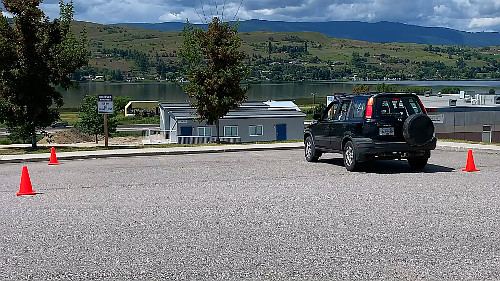 Teaching new drivers how fast they're going in relation to a pylon is a starting point for learning to drive.Yet, this fundamental component of driving is NOT something that we teach driving.
Teaching new drivers how fast they're going in relation to a pylon is a starting point for learning to drive.Yet, this fundamental component of driving is NOT something that we teach driving.
Why?
Because it's an abstract component that most can't even conceptualize.
And it's these variables of time, distance, and the unpredictability of road users and traffic that makes self-driving car impracticable.
Most simply call it "the feel of the car" or something you acquire with experience.
As a basic skill for driving, you need to be able to determine how fast you're going in relation to that vehicle, or that other road user so that you correctly manage speed and space.
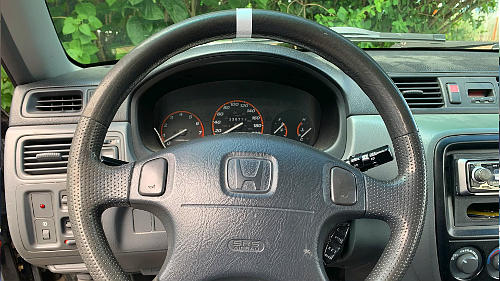 Put a piece of tape on the top of the steering wheel to help new drivers with the basics of steering.It's the mis-management of speed and space that are the leading cause of crashes.
Put a piece of tape on the top of the steering wheel to help new drivers with the basics of steering.It's the mis-management of speed and space that are the leading cause of crashes.
Space Margins Make You a Safer Smarter Driver
By managing speed and space, you can maintain your space margins.
You can maintain your "minimum safe distance."
It's space margins that will make you a safer, smarter driver and keep you out of trouble and not crash.
You always want to stop so you can see the tires of the vehicle in front making clear contact with the pavement.
 Always stop behind traffic so you can see the tires of the vehicle in front making clear contact with the pavement. This is minimum safe distance.That's approximately one vehicle length of space, and you want to maintain a three to four second following distance behind other traffic.
Always stop behind traffic so you can see the tires of the vehicle in front making clear contact with the pavement. This is minimum safe distance.That's approximately one vehicle length of space, and you want to maintain a three to four second following distance behind other traffic.
And the way that you know that, yes, you can do that counting thing with the fixed object and whatnot, but nobody does that.
You need to use the accelerator for controlling space in front and around your vehicle.
 Forward and reverse figure '8s' in a pylons will accelerate a new driver's learning and control of the vehicle.If you're using the brake for anything other than:
Forward and reverse figure '8s' in a pylons will accelerate a new driver's learning and control of the vehicle.If you're using the brake for anything other than:
1) coming to a stop;
2) slowing down for turning traffic in front;
3) controlling your speed on a downgrade;
4) or unexpected events.
Then you're using your brake too much and you're being reactionary in traffic and giving up control of your vehicle.
This article is made possible by the course package, Pass Your Driver's Test First Time Course Package.
Because we know that your driver's test is the most stressful day of your life and without some form of driver training, your chances of passing are less than 50%.
As a bonus, we'll include both the defensive and winter driving smart courses.
These will make you a safer, smarter driver and reduce your chances of being involved in an accident.
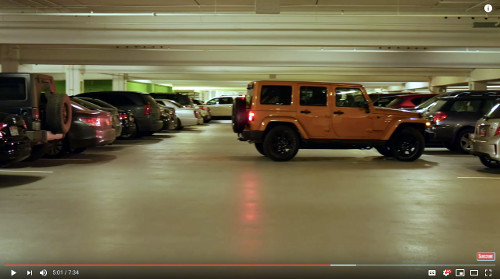 Most new drivers get into trouble driving in parking lots because they didn't practice the basics of driving.
Most new drivers get into trouble driving in parking lots because they didn't practice the basics of driving.
Consistency
Develop Driving Habits that will Keep You Safe When You're Tired & Make Mistakes
Observing deliberately and gathering information about the ever changing traffic condition in which you're in.
Develop a forward scanning pattern that takes in the instrument panel, center mirror, and the wing mirrors.
Also, having "calm awareness" of the traffic situation in every direction of your vehicle.
Shoulder checking every time you change directions of the vehicle.
Sarah A. asked me the question about why do I shoulder check on a left hand turn when there's a concrete barrier there?
The reason is consistency.
 A driver that can reverse well is a safer, smarter driver overall.You want to be consistent in your basic observation skills so that these become habits.
A driver that can reverse well is a safer, smarter driver overall.You want to be consistent in your basic observation skills so that these become habits.
These driving techniques just happen when you're driving.
You don't have to think about it and you're going to be a safer, smarter driver because even when you get tired or make mistakes, you're still going to have these observation skills in place.
You're going to scan an intersection before entering and you're going to do your shoulder checks before changing directions of your vehicle.
Telling Other Drivers & Road Users What You're Doing
Signal every time that you change directions of the vehicle both forward and in reverse, whether you're on a roadway or whether you're in a parking lot.
Always signal and communicate to traffic, to other traffic your intent.
Even in parking lots, signal when you change direction of the vehicle.
Develop the habit of shoulder checking and signaling every time you change the vehicle's direction.
Signals are NOT to tell other traffic that you ARE moving over, but rather that you WISH to move over.
Practice the basics, practice the fundamentals of driving.
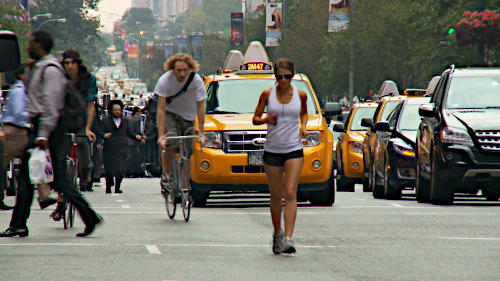 Speed differentials with pedestrians and cyclists are one of the hardest to determine for drivers and is a learned skill over time.Be consistent in those fundamentals.
Speed differentials with pedestrians and cyclists are one of the hardest to determine for drivers and is a learned skill over time.Be consistent in those fundamentals.
Know the hard and fast rules.
For example, not changing lanes in an intersection because changing lanes in an intersection and moving through an intersection are two separate maneuvers.
40% of crashes happen at intersections so you want to reduce the chances of being involved in a crash at this high risk area along the roadway.
At intersections, you're also more likely to encounter vulnerable road users and cross their path.
Thus it's an intersection.
These vulnerable road users make up 25% of traffic fatalities in industrialized countries; globally, vulnerable road users make up 50% of traffic deaths.
Practice the fundamentals, know what the fundamentals are and be consistent with your fundamentals to both pass your driver's test and be a safer, smarter driver.
And remember, pick the best answer, not necessarily the right answer.
Have a great day, bye now.
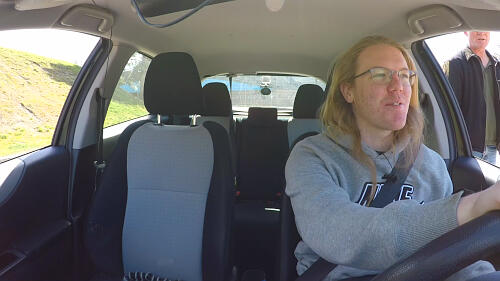 Teach new drivers why they're doing a skill or technique and they're more likely to develop the habit for safer smarter driving.Hang on there one sec.
Teach new drivers why they're doing a skill or technique and they're more likely to develop the habit for safer smarter driving.Hang on there one sec.
The thought of failing your driver's test is what keeps you up at night right now, click the link over here, check out the smarter driver course package that guarantees that you will pass your driver's test first time.
Click the link and check that out and have a great day.
All the best, bye now.









